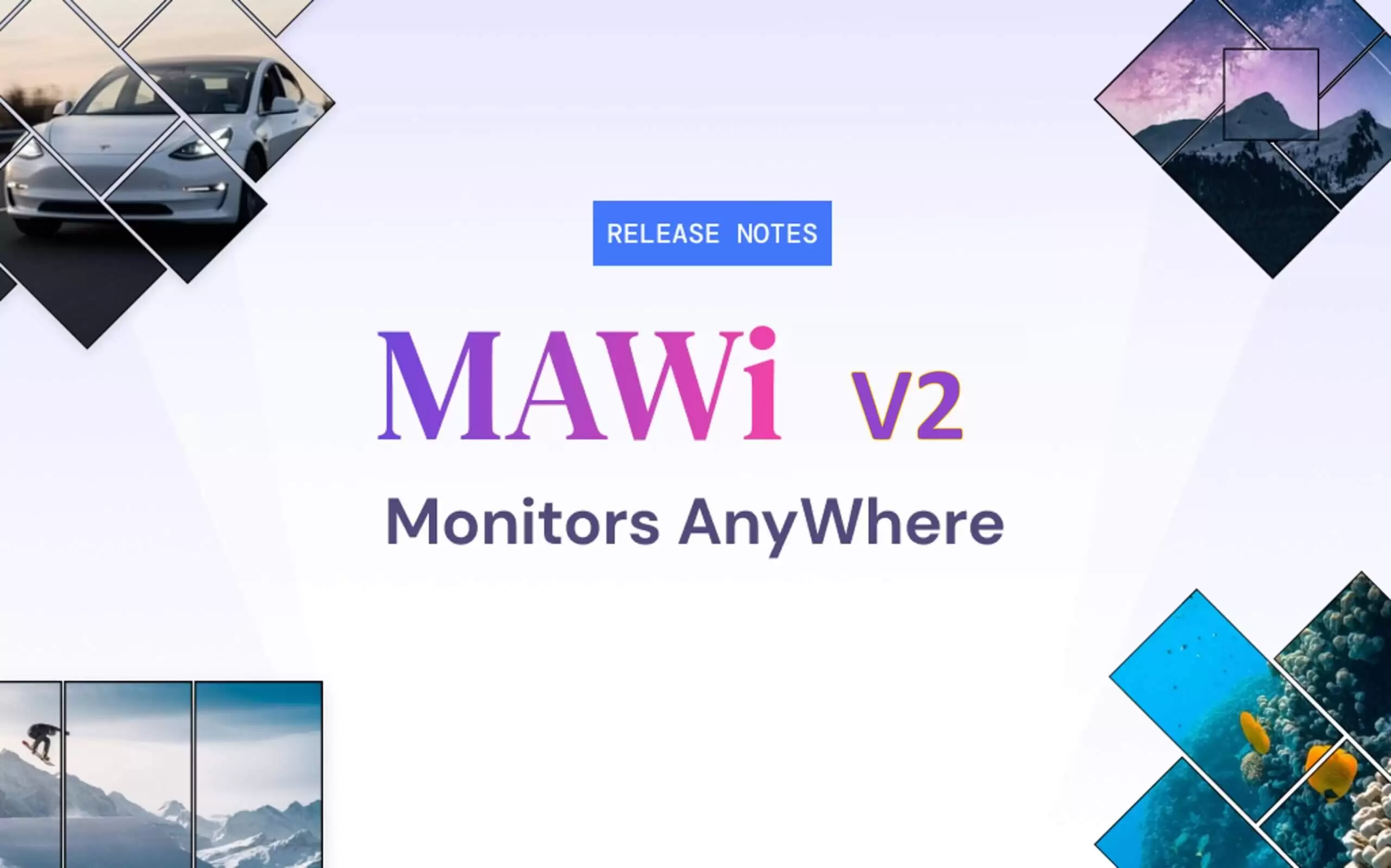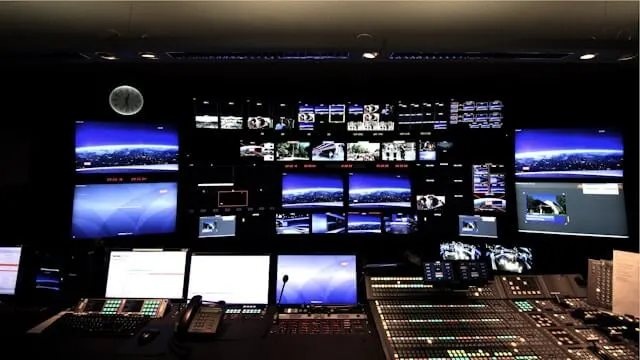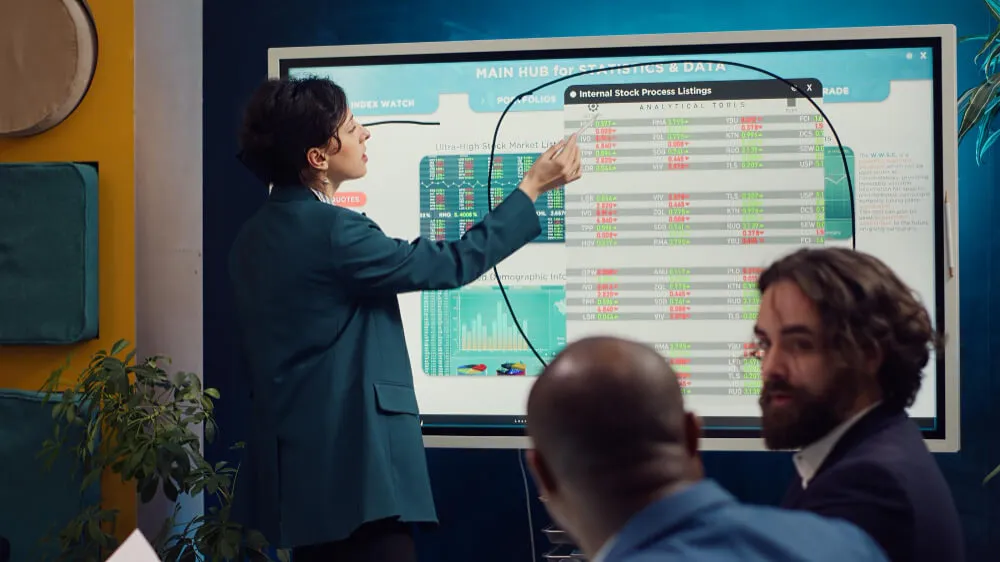Have you ever entered a control room, a conference center, or a hip café and seen a huge wall of bright screens that all move in sync? It might look like magic, but it’s actually the video wall controller pulling the strings in the background.
Why a Video Wall Controller Is the Heart of Every High-Impact Display System
At the core of every smooth-running digital signage setup lies this powerful tool. But first, what is digital signage? It’s all about using screens to broadcast dynamic visuals, ads, or up-to-the-minute data.
A video wall controller manages how that content is displayed across multiple screens, turning a cluster of monitors into a single, cohesive experience.
Monitors AnyWhere specializes in making this tech accessible and scalable with game-changing solutions like MAWi—our web-based platform that lets users control multiple displays from one simple interface. Whether you’re in IT, marketing, or operations, this technology makes it easier than ever to bring your digital displays to life.

Must-Have Features in a Video Wall Controller for Smooth Display Performance
If you’re going to invest in a video wall controller, here’s what should be on your checklist:
- Resolution Support: Look for controllers that handle full HD, 4K, or even 8K resolutions if needed.
- Multi-Input Handling: The more input types it supports (HDMI, DisplayPort, IP streaming), the more versatile your setup will be.
- Content Scheduling & Management: Integration with digital signage platforms like Online Monitors AnyWhere allows centralized scheduling and real-time control from the cloud.
- User Interface: Tech shouldn’t feel like a puzzle. Opt for platforms like MAWi, which are intuitive and accessible, even for those who aren’t tech-savvy.
Want to see how our system works in real life? Book a live demo with Monitors AnyWhere and experience the simplicity firsthand.
How a Video Wall Controller Handles Resolution, Inputs, and Outputs
Think of your controller as an orchestra conductor. It’s directing signals from multiple content sources—your computer, a media player, a live feed, or even Zoom—to the right screens at the right time, in the right resolution.
A good video wall controller harmonizes all those moving parts:
- Balancing resolution across screens
- Syncing multiple inputs with little to no lag
- Ensuring outputs don’t get pixelated or stretched
This is especially critical for control rooms, lobbies, and boardrooms—spaces where clarity and precision matter. And yes, our MAWi platform checks all these boxes and then some.
Video Wall Controller Types: Hardware vs Software – Which Should You Choose?
So, what’s better—hardware-based or software-driven video wall controllers? Let’s break it down:
TYPE: Hardware-Based
Pros: Ultra-reliable, dedicated performance
Cons: Higher cost, less flexible
TYPE: Software-Based
Pros: Affordable, scalable, easily updated
Cons: Depends on existing infrastructure
If you’re managing multiple locations or want the flexibility to control screens remotely, a software-based controller like MAWi is your best friend. It lives in your browser, meaning you can tweak layouts or content from literally anywhere (yes, even in your pajamas).
Common Mistakes to Avoid When Buying a Video Wall Controller
Let’s save you a few headaches, shall we? Watch out for these frequent slip-ups:
- Overlooking compatibility: Not every controller plays nicely with all screen brands or configurations.
- Ignoring future scalability: If your screen network might grow, don’t go for a limited system now.
- Skipping the demo: Always test before buying. Platforms like Online Monitors AnyWhere let you explore features before committing.
- Neglecting remote management tools: If you can’t control your screens from afar, you’re missing out on serious convenience.
Pro Tip: Before you decide, ask: “Is this easy to scale and manage?” With Monitors AnyWhere, it absolutely is.

How to Match the Right Video Wall Controller to Your Budget and Use Case
Budget matters. But so does value. Whether you’re outfitting a security control room, upgrading a digital classroom, or launching a nationwide retail campaign, here’s how to align your needs with the right controller:
- For tight budgets: Go software-based. MAWi is cost-effective and eliminates the need for bulky hardware.
- For enterprise-level installations, hybrid models with centralized software and backup hardware might offer peace of mind.
- For marketing or HR teams, easy scheduling and content updates are a must. Platforms like Online Monitors AnyWhere are made for this.
Need help choosing? Our team is ready to help you find a solution that fits your setup like a glove. Contact us today.
Final Word: Take Your Screen Performance to the Next Level
Your video wall is only as powerful as the controller running it. Whether you’re building a high-impact control room, a jaw-dropping showroom, or a dynamic marketing display, choosing the right video wall controller is non-negotiable.
With MAWi and Online Monitors AnyWhere, you’re not just buying software—you’re unlocking seamless, scalable, and surprisingly fun screen management.
Explore our digital signage solutions at MonitorsAnyWhere.com and take control of your visual experience today!
FAQs
What does a video wall controller do in a display system?
A video wall controller manages how content is displayed across multiple monitors. It takes input signals and distributes them to form a synchronized, unified visual across all screens.
Can one video wall controller support different screen sizes and resolutions?
Yes! Especially with software solutions like MAWi, which are designed to adapt to a variety of screen sizes and resolutions without breaking a sweat.
What are the benefits of using a software-based video wall controller?
Lower costs, easier updates, remote access, and flexibility to manage content from anywhere. It’s perfect for businesses that need to pivot fast or scale quickly.
How do I know which video wall controller is right for my setup?
Consider your screen layout, content type, number of inputs, and budget. If you’re unsure, Monitors AnyWhere offers expert guidance and demos.
Is a video wall controller necessary for small-scale installations?
Even small setups benefit from centralized control. A controller keeps things smooth, professional, and easy to manage—no manual juggling of cables or remotes needed.




